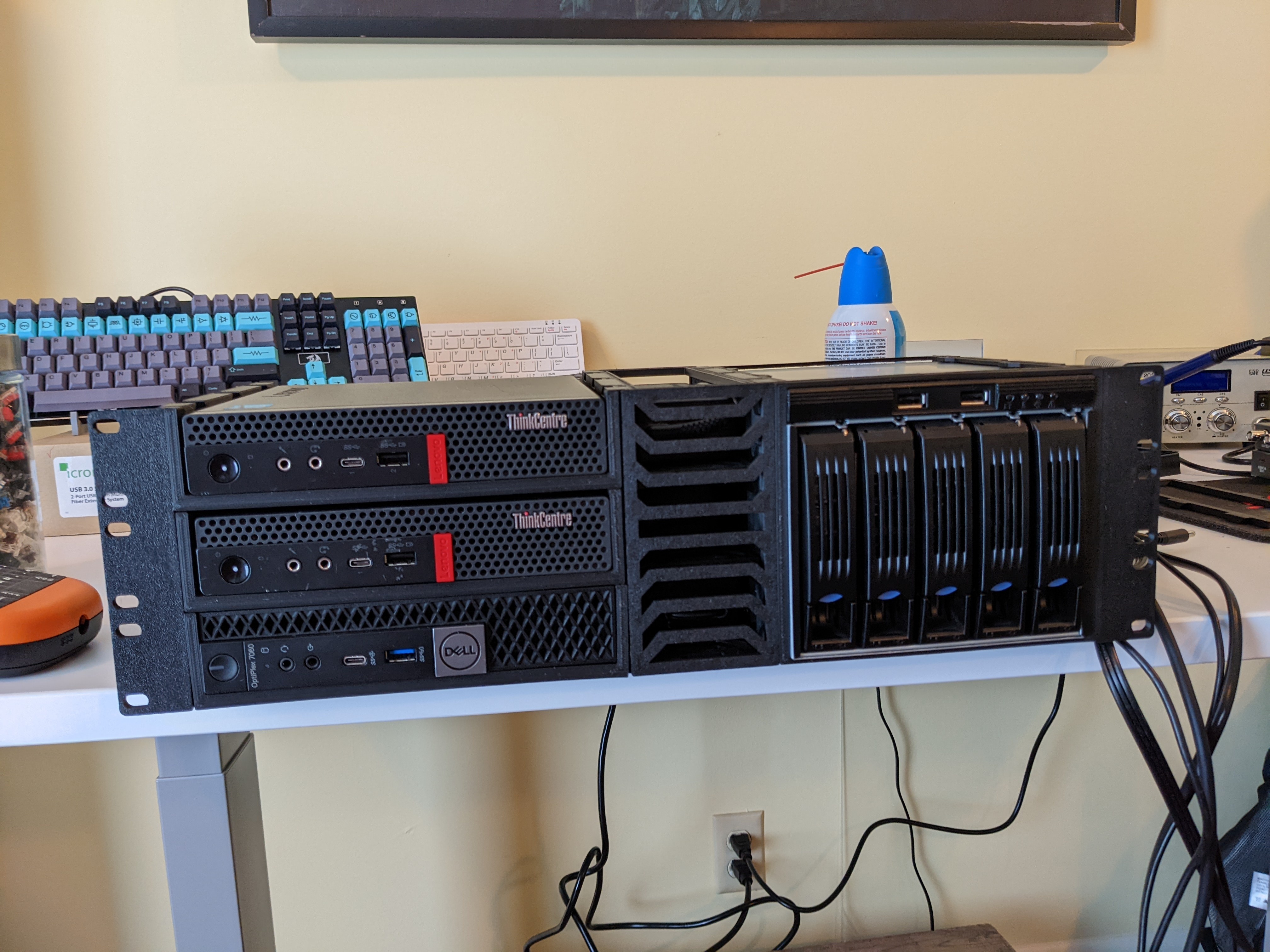

Second this, whatever you pick never let someone else “own” your data because then they own your company. If you cant export data freely so it can be imported into another system, then its not yours.


Second this, whatever you pick never let someone else “own” your data because then they own your company. If you cant export data freely so it can be imported into another system, then its not yours.


consumer crap is just that crap.
I like small PC’s as PFsense/Opnsense routers and then a POE switch and access points. It always works better than any mesh or consumer stuff.
Ubuntu server, it’s a bit more modern than Debian and has a massive install base which means someone has had your problem and fixed it before and documented it.


many times, shucking is a very valid way to get large format disks for cheaper than retail NAS parts. But be aware of what your buying and make sure that the disk your getting if its a white label is a reliable disk. WD Easystore/Mybook are generally good, as are the larger format Seagate external.


Im not sure Intel has any worthwhile CPU’s unless you are getting them used.
Currently E cores are mostly trash, and not all that “efficient” and letting a P Core turbo up and get the task completed uses less overall power.
Secondly Intel is lying about its heat output, and power use. Everything from 10th gen up is a power hog if you dont limit the performance to well below “stock” settings.
https://www.techspot.com/review/2612-intel-core-i5-13500/
This is a good match up between an i5-13500 vs R5 7600, which is the most interesting IMO. The R5 7600 seems to be about $15 less expensive for just the CPU and uses 3/4ths the power which will be a greater savings over time vs Intel. The AMD Motherboards also still seem to trend a bit lower in cost than Intel.
So overall its a good question. If you can get a use 13500 or one under $150 then its probably worth it, but at retail prices the 7600 will cost less to buy, and less to own while being similar in performance.


Create 3 VM’s and pass-through disks to each VM. Boom ceph cluster on a single computer.
ZFS/BRTFS might still be better, but if you really want Ceph this should work and provide expansion and redundancy at a block device level, though you wont have any hardware redundancy regarding power/nodes.

I just sharpie my cable runs and then just a lable maker on ports and panels.


I have and I have done unifi. I don’t like being restricted to their NVR or software solutions because it means I to toss the cameras if I want to extend solution with things like ptz or verifocal cameras. Want to add ai/ml detection sorry can’t do…
Unifi is good for some people but it’s not the solution for everyone. Reolink can also offer similar ecosystem experiences but also while letting you expand your system if wanted.


They do but are a poor value next to most other options.


Would not recommend this. It’s fun to tinker with but a poor substitute for real cameras.


Most cameras are self hosted but they are not marketed to consumers because they require running cables to them either for power and/or data.
Reolink camera with onvif so support can be connected to Frigate or Shinobi.
Hikvison and Dahua are common Chinese brands that have lots of options across lots of prices points but are treated as insecure or hostile iot devices required closed networks.
Costco often has camera and NVR packages that are passable.
Whenever possible make sure any camera you get is onvif so you can use it with any NVR or software.


https://www.theserverstore.com/
They also have a large ebay presence but I have purchased from both their ebay store, and their web store depending on what I needed.
That is fair, I have a fully height rack and I dont really want equipment at eye height anyway so I like to keep that area open.
I got a cheap rack vesa Mount and an old Dell with VGA from goodwill.

Adding a 2.5g card to a PC it’s the way to go. I put one in my mini 1l PC and run pfsense on it.

Snap… My bad but sure you could create your own parts. I was thinking about adding a motherboard tray and HDD caddies to my design so I could use matx or uatx boards in custom 1 and 2u designs.


I made my own and 3d printed them. I built this one so I could add disks but I have another version with 2 side by side and not stacked.


The only real advantage of RAID1 is that in some cases you get 2x the read performance. But doing snapshots where you get backups that include changes is more powerful than RAID or a volume copy.
Ubiquity is trash with fickle support based on the whims of what sells wide adoption. TP Link IMO is a decent value for the money if you want easy “prosumer” level networking gear. I have I have 3 TP Link APs as well as a 16 port 10g core switch and its great for my needs.
Mikrotik offers more features per $$ but its not as easy to use.